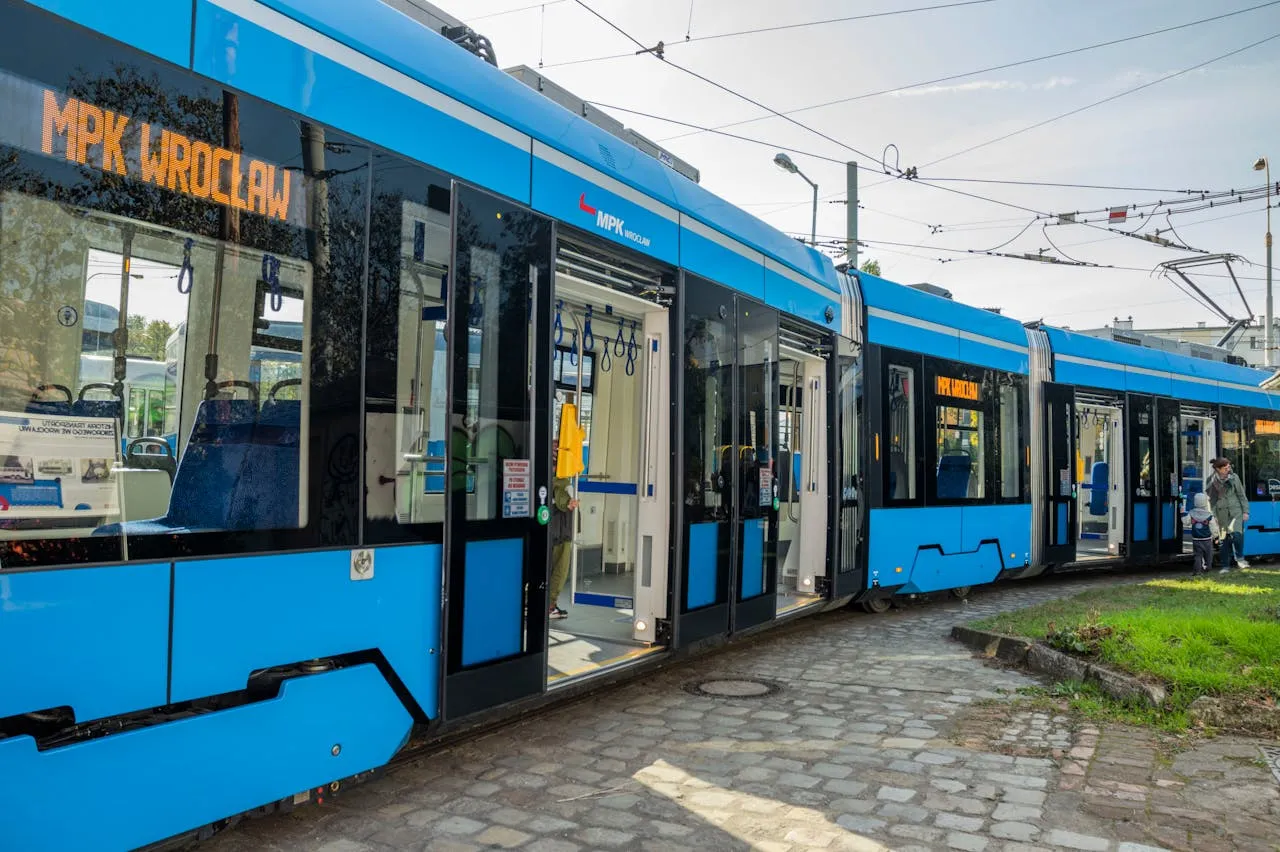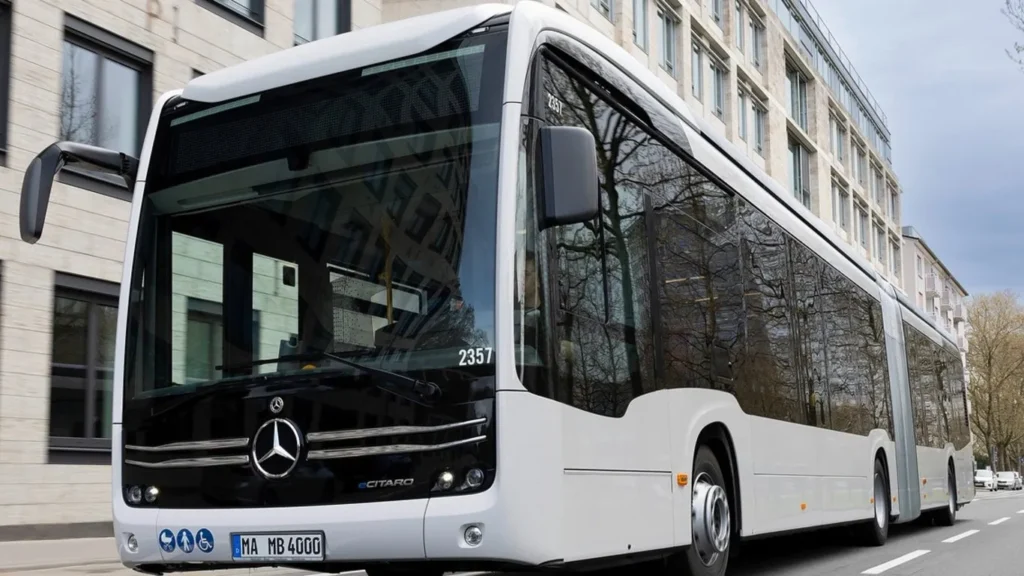
Mercedes-Benz eCitaro Hits New Milestone with Over 2,500 Units Delivered Across Europe
The Mercedes-Benz eCitaro, the all-electric, low-floor city bus developed by Daimler Buses, has achieved a significant production milestone. Since the commencement of series production at the Mannheim plant in late 2018, more than 2,500 eCitaro units have been manufactured and delivered to public transport operators across Europe. This success underscores the growing demand for sustainable mobility solutions and reflects the strong confidence that transport companies place in Mercedes-Benz’s electric bus platform.
With extensive deployments in German cities such as Stuttgart, Hamburg, Bonn, Dresden, Bremen, Wiesbaden, Nuremberg, and Mannheim—as well as widespread adoption in France, Italy, Sweden, Austria, Switzerland, Poland, and several other European countries—the eCitaro has become a central figure in the continent’s transition to electric public transport. This wave of electrification, powered by eCitaro, highlights how municipalities are reshaping urban transit to meet climate targets and passenger expectations for cleaner air and quieter roads.
Building a Legacy of Continuous Innovation
“Thanks to ongoing further development, the battery-electric Mercedes-Benz eCitaro has continuously expanded and continued its success story,” stated Mirko Sgodda, Head of Marketing, Sales and Customer Services at Daimler Buses. “We have continuously improved it in terms of drive variants, safety, and range—and the success speaks for itself: the eCitaro is attractive, safe, reliable, and economical to operate.”
One of the standout aspects of the eCitaro’s success is the brand’s commitment to providing comprehensive, turnkey electromobility solutions. Daimler Buses supports customers beyond the vehicle itself, offering integrated packages that include electric buses, charging infrastructure, and depot energy management—all from a single source. This holistic approach significantly reduces the complexity and barriers for transit operators making the shift to electric fleets.
Adapting to the Demands of Modern Public Transport
The Mercedes-Benz eCitaro is built on the proven foundation of the legendary Citaro series—long recognized as one of the most successful and best-selling city buses globally. Leveraging that platform, the eCitaro introduces new electric mobility technologies while maintaining a layout and performance profile familiar to drivers and operators.
Initially launched in 2018 as a 12.14-meter solo bus with a battery capacity of up to 243 kWh, the eCitaro lineup has since grown substantially. It now features an array of configurations to accommodate diverse public transport needs. The current models utilize advanced NMC3 (nickel-manganese-cobalt) lithium-ion battery packs, ranging from four to six modules and reaching a total capacity of up to 588 kWh. These batteries provide the energy needed to support intensive urban routes without frequent recharging, enabling operators to maintain high service availability.
Complementing the standard solo bus, the eCitaro K—a shorter 10.63-meter version—offers similar performance in a more compact footprint, ideal for narrower city streets and flexible routing. Both solo models are available in two- or three-door versions, providing ample customization based on boarding efficiency, passenger volumes, and operator preferences.
For higher capacity transit needs, the eCitaro G articulated bus, measuring 18.13 meters in length and available with three or four doors, features between four and seven battery packs. With a maximum capacity of up to 686 kWh, this variant is designed for heavily trafficked routes, offering both efficiency and range.
The Fuel Cell Extension: Next-Generation Range Capabilities
A pivotal advancement arrived in 2023 with the debut of the eCitaro fuel cell and eCitaro G fuel cell models. These variants integrate a 60 kW fuel cell system used as a range extender and house hydrogen tanks on the roof. This combination significantly increases the distance these buses can travel between recharging or refueling stops.

The eCitaro fuel cell version uses three NMC3 battery packs with a combined capacity of 294 kWh, while the articulated G variant supports up to four packs totaling 392 kWh. By converting hydrogen into electricity on the move, the fuel cell serves as an onboard generator, minimizing reliance on stationary infrastructure and expanding operating flexibility—particularly beneficial in regions with less-developed electric charging networks.
Looking ahead, Mercedes-Benz plans to introduce a new “H2 mode” in 2025, allowing these buses to run entirely on hydrogen. In this mode, the battery is charged during operation via the fuel cell, eliminating the need for plug-in charging during layovers or depot downtime. This represents a notable leap toward greater autonomy and route freedom, especially in cities with ambitious hydrogen infrastructure development plans.
Enhanced Battery Technology: NMC4 Arrives in 2026
From 2026 onward, all variants of the eCitaro will benefit from the next-generation NMC4 battery technology. These batteries promise even higher energy density, longer service life, and improved compatibility with high-speed charging systems of up to 300 kW. With this upgrade, the eCitaro will not only achieve extended range but also support more dynamic and demanding operational schedules, aligning with the real-world requirements of busy urban transit networks.
Thermal Management: The Unsung Hero of Range Efficiency
While battery capacity and charging speed are often at the forefront of electric vehicle discussions, energy consumption is the true metric that determines real-world performance—and thermal management plays a central role.
From the outset, Mercedes-Benz engineers focused on optimizing the Mercedes-Benz eCitaro’s HVAC (heating, ventilation, and air conditioning) systems to minimize energy draw. As a result, the eCitaro consumes up to 40% less energy for climate control compared to its internal combustion engine predecessor. Features like high-voltage battery temperature regulation and efficient heat pump systems help preserve battery charge, ensuring more of the stored energy is used for driving rather than heating or cooling.
This innovative thermal management solution not only extends range but also improves battery longevity, consistent performance in different weather conditions, and reduces operating costs over the vehicle’s lifecycle.
Safety Comes Standard: Technology That Protects
Safety is non-negotiable for public transit, and the eCitaro delivers on all fronts with a robust suite of passive and active systems. The vehicle architecture includes crash-proof battery enclosures and extensively tested high-voltage components, all certified to comply with hazardous goods transportation regulations.
For drivers, the cockpit remains nearly identical to that of the standard Citaro, allowing for easy transitions and minimal retraining. Ergonomics, visibility, and comfort are designed to reduce fatigue and improve driving confidence. The Mercedes-Benz eCitaro fuel cell variants feature an additional gauge that displays hydrogen tank levels for added operational clarity.
Standard safety technologies include:
- Radar-based Sideguard Assist (2nd generation)
- Frontguard Assist
- Rear-view camera systems
- Traffic Sign Assist
- Tire Pressure Monitoring (TPM)
- Driver Attention Assist
- Alcohol interlock interface
- High-efficiency particle filters with antiviral coating
Additional options include a 360° camera system (solo buses), a 270° camera system (articulated buses), MirrorCam replacing exterior mirrors, and Preventive Brake Assist 2 for emergency braking.
These technologies collectively create one of the safest public transport vehicles on the market, protecting passengers, pedestrians, and operators alike.
Flexible and Modular Charging Solutions
Recognizing that charging infrastructure can vary significantly across cities and operators, the eCitaro has been engineered with a modular charging system. Operators can choose between plug-in charging, roof-mounted pantographs, or charging rails depending on route schedules and depot configurations.
Up to four different charging socket positions can be configured per bus, allowing for seamless integration into existing systems or planned upgrades. This versatility ensures that the Mercedes-Benz eCitaro can adapt to evolving infrastructure over its lifespan.
Going Beyond the Bus: Digital Services and Turnkey Integration
One of the key differentiators of Mercedes-Benz’s electric offering is its comprehensive approach to electromobility. Daimler Buses doesn’t just supply the vehicle—they provide a complete ecosystem, including charging station planning, infrastructure integration, and digital fleet management tools.
Every new Mercedes-Benz eCitaro is delivered with a suite of digital services as part of the Daimler Buses Digital Services Package. This includes real-time vehicle monitoring, performance analytics, predictive maintenance scheduling, and route optimization tools. These services enable fleet operators to maximize uptime, reduce total cost of ownership, and simplify the transition from diesel to electric.
With more than 2,500 units delivered and a rapidly expanding portfolio of innovations, the Mercedes-Benz eCitaro has firmly established itself as one of Europe’s leading electric bus platforms. Its flexible configurations, reliable performance, advanced safety features, and forward-looking technologies position it as a future-proof solution for public transport providers.
As cities continue to set aggressive goals for emissions reduction and cleaner air, the Mercedes-Benz eCitaro stands ready to meet these demands—quietly, efficiently, and sustainably—on the road to a zero-emission future.




